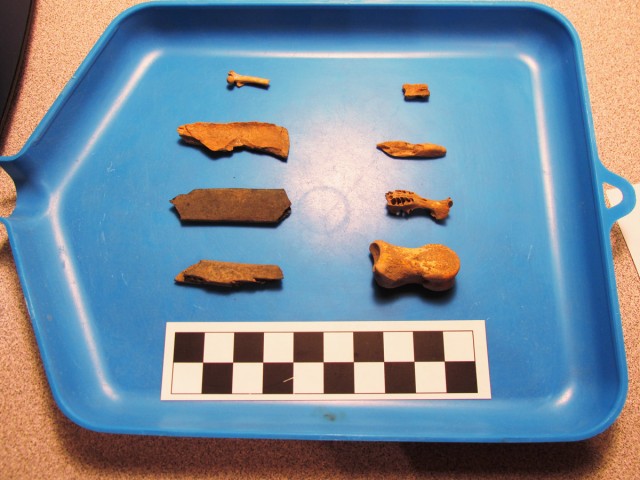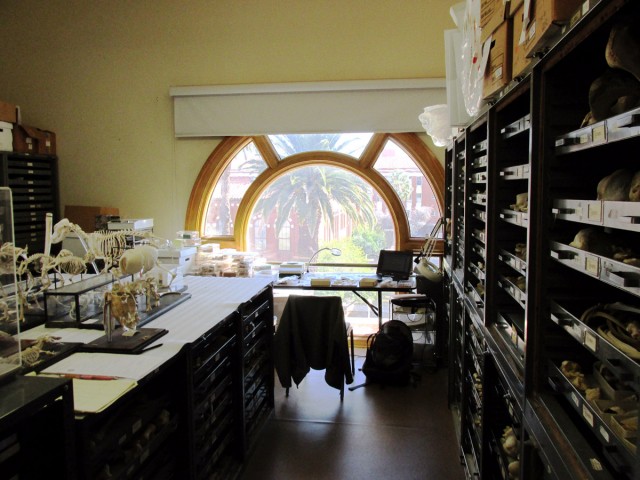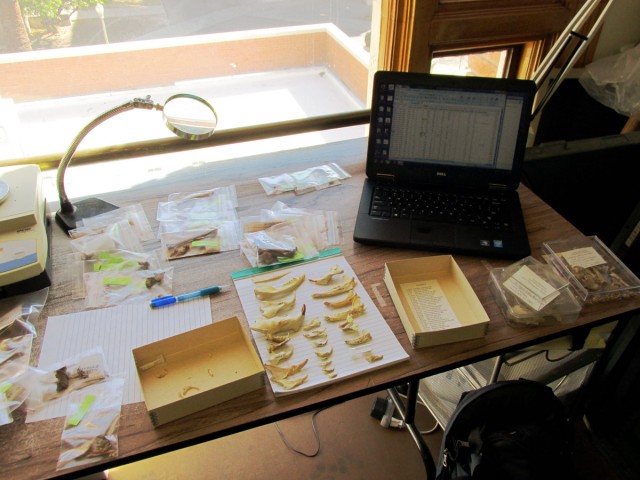- Home
- >
- Preservation Archaeology Blog
- >
- Learning from Broken Bunny Bones

A few years ago, when I was a graduate student, a bright young undergraduate came into the lab to ask about volunteering to help with animal bone analysis, or zooarchaeology. I will never forget the look of horror on his face when I poured a bag of broken animal bones onto the table—about 50 fragments, all under an inch long. I could see the whites of his eyes as he stammered, “Why would a person spend their life looking at something like this?” I never saw the poor guy again.

Zooarchaeology is a prime example of David Hurst Thomas’s oft-cited quote about archaeology, “It’s not what you find, it’s what you find out.” To be sure, there are occasional sites where the bones and bone assemblages are interesting all by themselves (Nawa Sugiyama’s work with animal sacrifices buried beneath pyramids at Teotihuacan, Mexico, is one recent example). Many of the bone fragments that cross my desk, however, are not particularly exciting to look at; it’s the “big picture” view of the data they generate that’s most interesting.
The vast majority of the identifiable bones from most Southwestern sites are from lagomorphs—cottontails in the genus Sylvilagus and jackrabbits in the genus Lepus— and I spend a lot of time counting, weighing, and measuring tiny scraps of these bones. Although the bones of these two genera look very similar, in the Southwest they can often be distinguished based on size in comparison with known species in reference collections. (Southwestern cottontails are quite a bit smaller than jackrabbits.)

Residents of our Southwestern deserts today know that the two animals live in many of the same habitats, but respond differently to threats: jackrabbits often run immediately when they spot danger, whereas cottontails “freeze” and hope to escape notice until predators are almost on top of them before running away. These and other characteristics mean that although they share habitats, the relative proportion of the two species in any given place changes as local vegetation shifts. In the southern U.S .Southwest, as villages are inhabited by humans for longer periods and as human populations grow, the proportion of jackrabbits in comparison to cottontails in bone assemblages tends to increase.
On the Colorado Plateau, that pattern is reversed; with the growth of villages, the proportion of cottontails tends to increase. Researchers continue to investigate the specifics of this pattern, but in general, the expansion of farmland and other anthropogenic (human-caused) landscape effects in the south seem to encourage the open areas favored by jackrabbits, whereas in the north, these encourage small, shrubby vegetation that allows cottontails to thrive.
Of course, other things can affect this pattern, including elevation differences that influence natural vegetation, and hunters’ decisions about whether to hunt rabbits individually or with group animal drives. When used cautiously in combination with other lines of evidence such as climate records and paleoethnobotany (plant remains), the “lagomorph index” can help in reconstructing changes in past landscapes.
One example of this is its use in understanding anthropogenic landscape changes and plant and animal species recovery in the eastern Mimbres area near the modern town of Truth or Consequences, New Mexico. During the Classic Mimbres period—A.D. 1000 to 1130, the time when human populations were at their largest there—evidence from both zooarchaeology and paleoethnobotany shows that people had cleared much of the local riparian vegetation for farmland and for wood to use as fuel and construction material to support villages of several hundred people. After 1130, farmers left these villages and lived in smaller, dispersed hamlets of 12 or fewer houses—what archaeologists call the Reorganization phase.
The bone assemblages from these hamlets show a higher proportion of cottontails than the big Classic Mimbres villages from the same elevations, suggesting the vegetation around the Reorganization phase hamlets was less heavily impacted by human activities. This and other lines of evidence show us that farmers after the end of the Classic Mimbres period pursued a flexible land-use strategy that included diverse natural resources and varied social connections, allowing them to adapt even as the venerable Classic Mimbres social traditions and villages in the area faded away.
Counting fragments of broken bunny bones may not be the most glamorous part of my job (I’m pretty sure that honor goes to teaching our Preservation Archaeology Field School!), but when I finally get to add up all the bone counts and compare assemblages from multiple sites across different time periods, the results can be pretty interesting. And when we add these patterns to other lines of evidence, the result is an exciting picture of how humans and the Southwestern landscape have changed and responded to each other again and again in a complex relationship that has allowed people to thrive here for thousands of years—something I think we can all agree is worth looking at.
